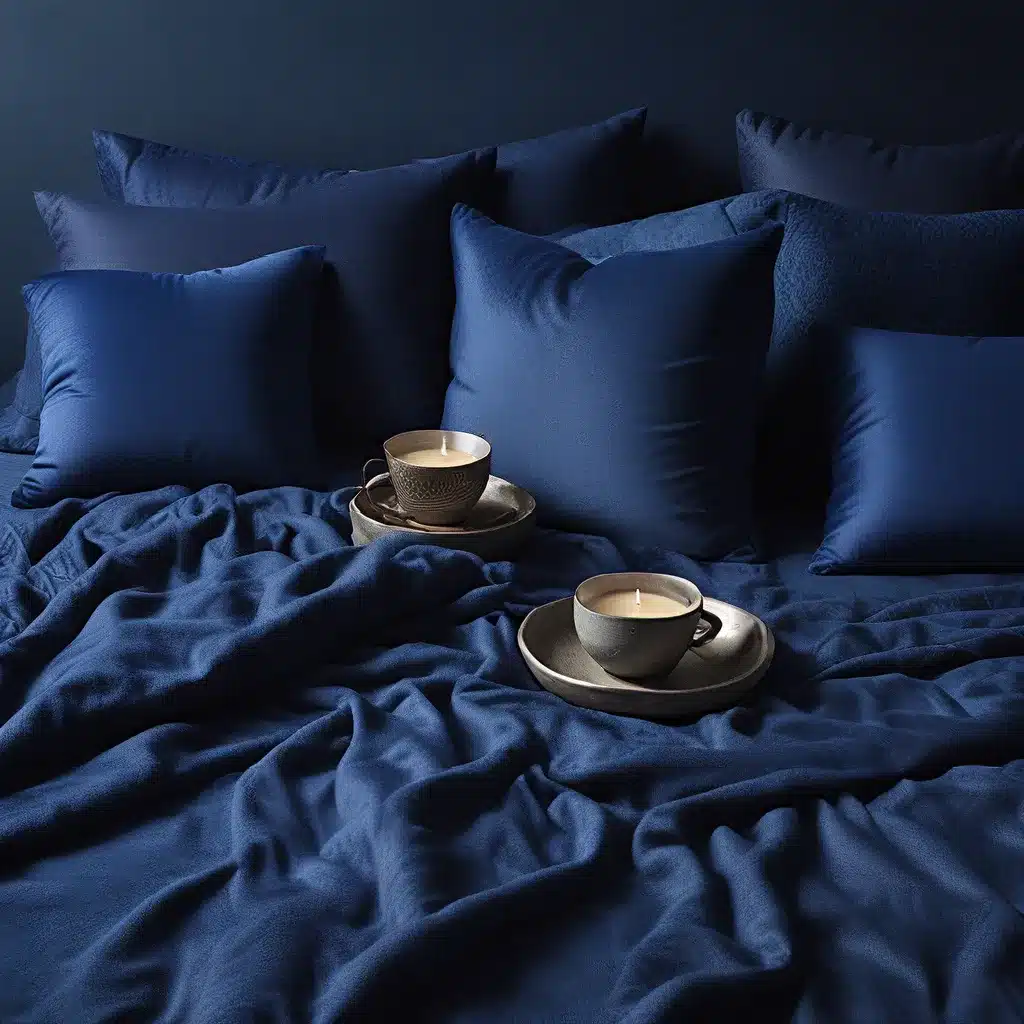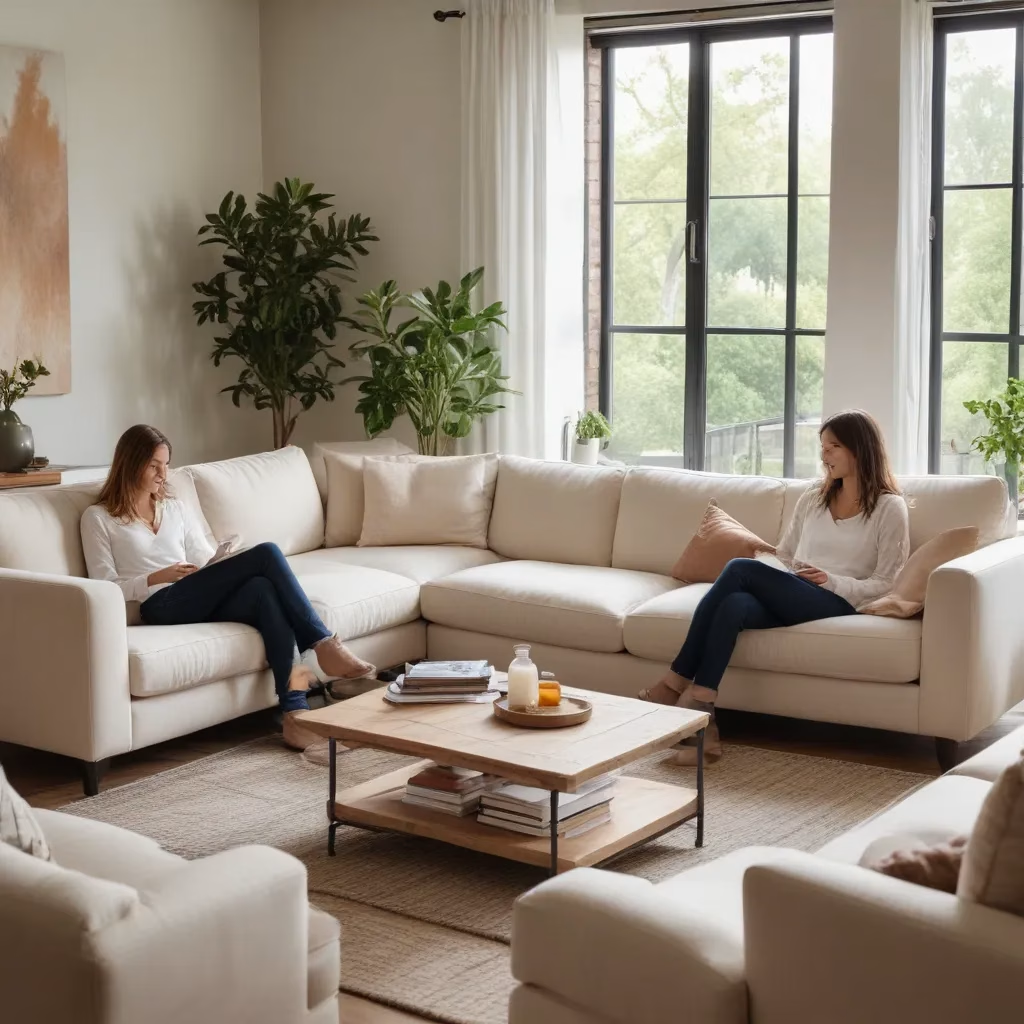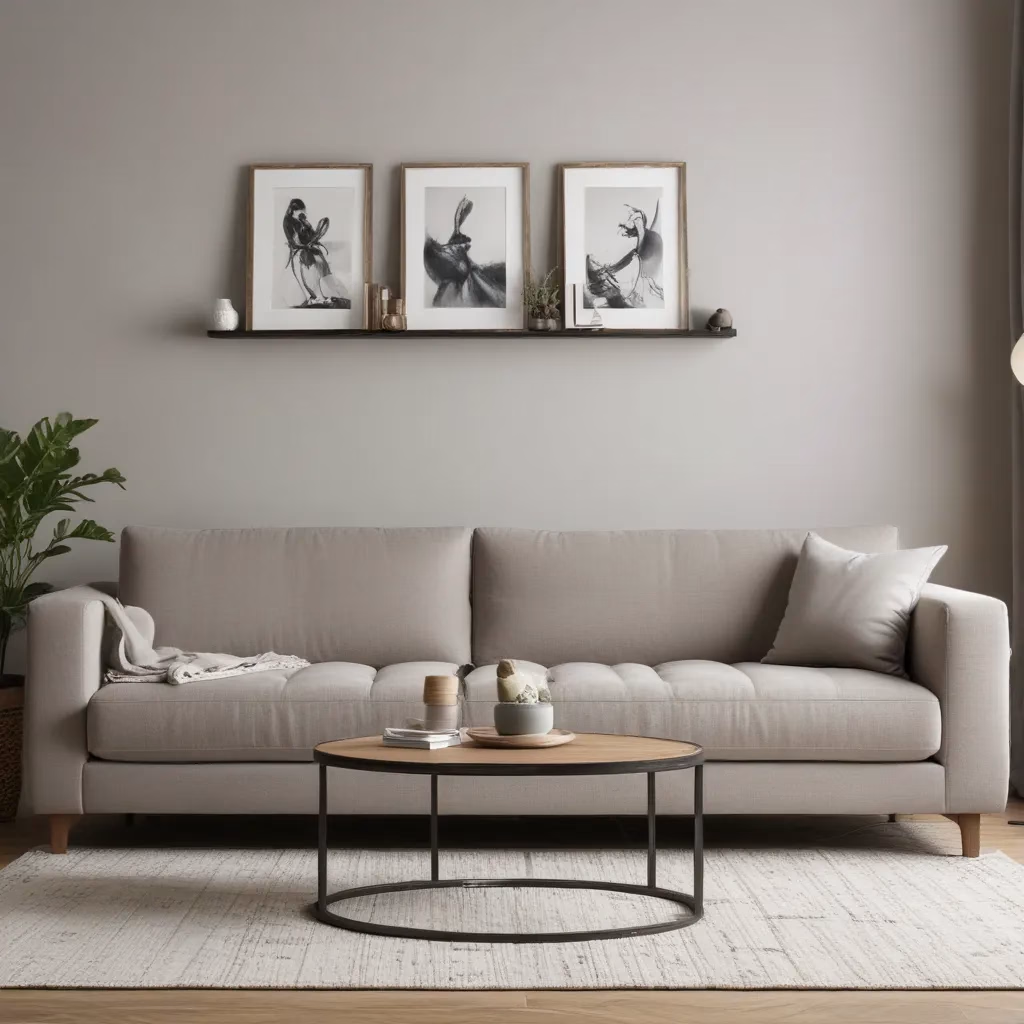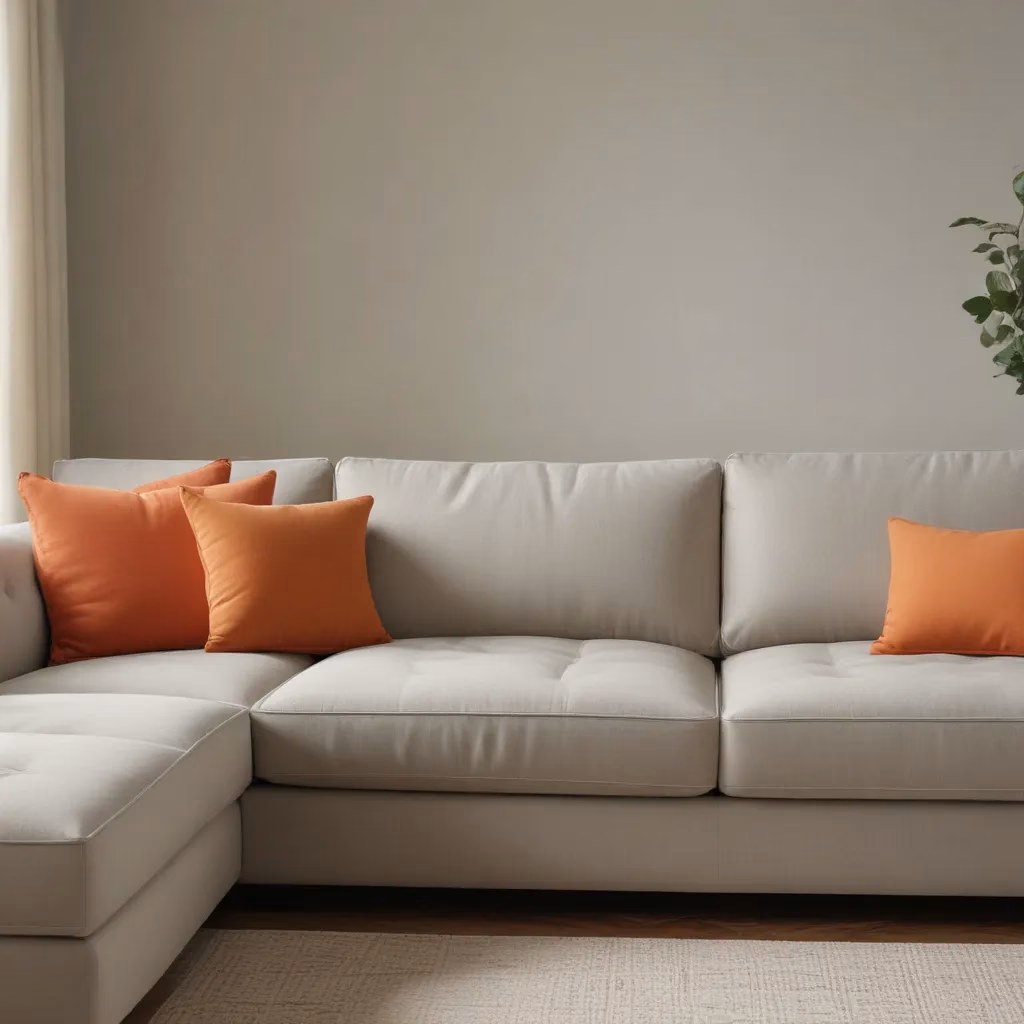
As an interior design enthusiast, I’ve always been drawn to the alluring and atmospheric qualities of moody living spaces. These cozy sanctuaries, with their rich textures, warm tones, and enveloping ambiance, have a way of captivating the senses and creating a sense of comfort that’s hard to resist.
When I first learned about the latest moody living room trend, I couldn’t help but feel a surge of excitement. Finally, the design world was embracing the very aesthetic that had long captured my imagination. But as I delved deeper into the topic, I realized that there was so much more to this trend than met the eye.
Through my research, I discovered that the rise of moody design schemes is not just a passing fad, but a reflection of a deeper shift in our collective design sensibilities. In a world that has become increasingly minimalist and devoid of personality, moody interiors offer a refreshing antidote – a way to infuse our living spaces with character, depth, and a touch of drama.
The Evolution of Moody Living Room Design
The journey towards embracing moody living room design has been a fascinating one. According to Dani Crawford, lead interior designer and senior associate of Kimmel Studio Architects, the trend is largely a response to the “gray-and-white design era” that has been slowly phased out.
“The minimalist lack of warmth and color left consumers with few options for creative expression and character,” Dani explains, “so now designers are seeing more requests for moody design palettes as a means to breathe life and personality back into their spaces.”
This shift towards bolder, more characterful colors has been a welcome change for many homeowners and design enthusiasts. As Kailee Blalock, co-founder of House of Hive, explains, the essence of a moody living room lies in the “careful selection and application of color.”
“Moody atmospheres are often characterized by the use of darker jewel tones or a subdued color palette,” Kailee notes. “Consistency is crucial, and lies in ensuring that paint colors, furniture, lighting, and all materials in the room align with the tonal color palette, making sure all the undertones match.”
Crafting the Perfect Moody Ambiance
Creating a moody living room isn’t just about selecting the right color palette – it’s a multifaceted approach that requires attention to detail and a keen understanding of how various design elements work together to set the tone.
One of the most important factors to consider is lighting. Elizabeth Drake, principal designer of her eponymous design firm based in Chicago, emphasizes the importance of relying on “low ambient lighting” rather than bright sunlight or harsh overheads.
“Moody rooms can feel like a pause button for busy lives,” Elizabeth explains, “which seems to be a lot of their trending appeal. Paying close attention to the placement of lights throughout the space is also vital.”
In addition to lighting, texture plays a crucial role in creating a moody living room. Dani Crawford notes that she often incorporates “warm stained natural woods” to appreciate grain and texture, as well as “rich jewel tones” to bring in emerald greens, sapphire blues, and plum.
“When combined with upholstered furniture and fabric-rich curtains or drapes,” adds Matthew O’Grady, director of Thomas Matthew Kitchen & Furniture, “dark wood tones work beautifully in a moody living room.”
Diving into the Moody Color Palette
While neutral colors may have been the go-to choice in the past, the moody living room trend has ushered in a new era of bold, dramatic hues. Amber Shay, National VP of Design Studios at Meritage Homes, suggests that darker blues are the perfect colors for a sophisticated and “dramatic space.”
“Darker blues can be used as accents with items like pillows, artwork, and decorative accessories,” Amber explains. “For a bolder look, use dark blue as an interior wall or ceiling color or for painted cabinets and furniture.”
Matthew O’Grady echoes this sentiment, noting that the color palette is the “primary defining factor” of a moody living room. From marine blue and eggplant purple to enigmatic gray, these rich tones serve as a foundation for the rest of the space.
“Introducing these colors might seem intimidating,” Matthew acknowledges, “but when balanced with softer and complementary hues or accent pieces, they can exude a captivating and embracing environment.”
Layering Textures for a Cocooning Comfort
Texture is another crucial element in creating a moody living room that exudes depth and richness. Dani Crawford emphasizes the importance of incorporating “metallic finishes in warm brass tones” and “luxurious textiles like leather and velvet” to help wrap up the overall design.
Artem Kropovinsky, interior designer and founder of New York City-based Arsight, agrees that velvet upholstery is an easy way to “up the comfortability” of the space. But textures don’t just come into play with furniture and accessories – every surface of the room contributes to the overall moody aesthetic.
“Consider applying high-contrast finishes such as a rough-hewn black stone fireplace as a focal point against light wood and white walls,” suggests Trish Knight, co-founder of Knight Varga Interiors, “or a full wall of dark stained or painted millwork in a room that is otherwise soft and neutral in its finishes and textures.”
By layering these diverse textures and materials, you can create a living room that is not only visually striking but also incredibly inviting and cocooning.
Embracing Moody Wallpapers for Maximum Impact
One of the most impactful ways to achieve a moody living room aesthetic is through the strategic use of wallpaper. As Sarah Merenda, founder of Merenda Wallpaper, explains, “Rich, deep wallpaper designs can bring about a strong moody aesthetic in any setting.”
Patterned wallpaper offers versatility, whether it’s used as a furniture backdrop, an accent wall, or to cover an entire room for a striking effect. Sarah suggests that to maintain a sense of spaciousness and balance, it’s important to “incorporate organic shapes, brass and gold accents, or additional greenery.” This ensures that the room feels harmonious, allowing the design details to enhance rather than overpower the space.
For those who prefer a more minimalist approach, Shaunn Lipsey, principal designer and creative director of Shaunn Lipsey & Co., recommends a textured or intricate wallpaper in the same color scheme. By painting the room’s trim and crown molding to match the wallpaper, you can achieve a curated moody look that feels effortless and cohesive.
Elevating the Moody Atmosphere with Art and Greenery
No moody living room would be complete without the addition of art and greenery. As Ryan Austin Hagood, principal designer with rad Interiors, explains, these elements can “elevate a moody living room, adding life without too much brightness.”
“Moody living rooms feel enveloping, inviting, and welcoming,” Ryan says. “Ample natural light really drives how dark you can go, but if you can do it, a moody living room provides a warm hug if you like cozy vibes. The dark color provides a backdrop for artwork and plants in a very dramatic way.”
When it comes to artwork, Donna Mondi, founder of Donna Mondi Interior Design, suggests incorporating “dark and edgy artwork” to tie together the depth of finishes in the space and provide a focal point for the room. And as Kristi Nelson, owner and principal designer of KMNelson Design, notes, the addition of “beautiful real plants” can further enhance the atmospheric quality of a moody living room.
Designing for the Senses: The Essence of Moody Interiors
At the heart of the moody living room trend lies a deeper understanding of how design can impact our senses and emotions. As Kristi Nelson explains, “Moody doesn’t have to mean dark, edgy, or somber. Moody is truly that – a mood, a vibe, an atmosphere.“
The intention behind designing a moody space, Kristi says, is to “invoke a certain emotion” – whether it’s cozy, contemplative, relaxing, or even exuberant. This is because, as humans, we “inherently connect our senses and emotions,” and color has “tremendous psychological and emotional impact.”
By carefully curating the lighting, color palette, and textural details of a moody living room, designers can create an enveloping and atmospheric space that truly resonates with the senses. As Artem Kropovinsky of Arsight emphasizes, “Living room lighting is everything – go for dimmable options and a combination of many different sources like floor lamps, table lamps, and candles among others to create a cozy look.“
Embracing the Moody Revolution
As I’ve delved deeper into the world of moody living room design, I’ve come to appreciate the profound impact that this trend can have on our overall well-being and sense of comfort. These cocooning spaces, with their rich, layered aesthetics, offer a much-needed respite from the hustle and bustle of everyday life.
And with the wealth of expert insights and design tips available, creating a moody living room of your own has never been easier. Whether you’re drawn to the dramatic hues of deep blues and purples or the warm, organic tones of natural woods and textured fabrics, there’s a moody design scheme out there that’s perfect for your home.
So, why not take the plunge and embrace the moody revolution? With a little bit of creativity and a keen eye for detail, you can transform your living room into a sanctuary that reflects your personal style and provides a cocooning sense of comfort. After all, isn’t that what a living room should be all about?
Sofa Spectacular offers a wide range of moody and cozy sofas and living room furnishings that can help you achieve the perfect atmospheric look. Explore our collection and let’s create a space that’s as inviting as it is stunning.



